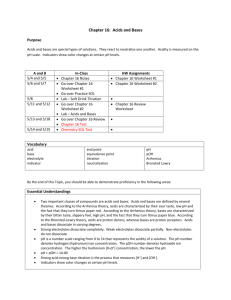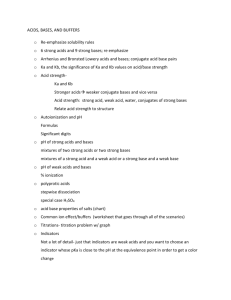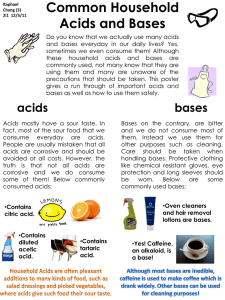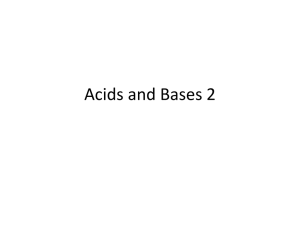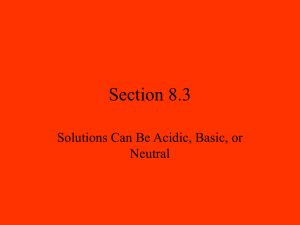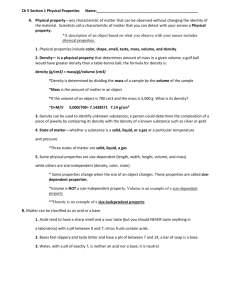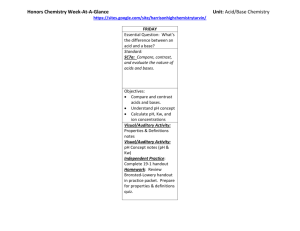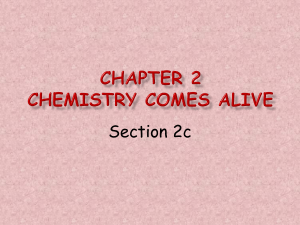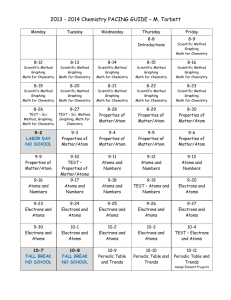Regents Chemistry Test Objectives * Unit 14: Acids/Bases & Salts
advertisement
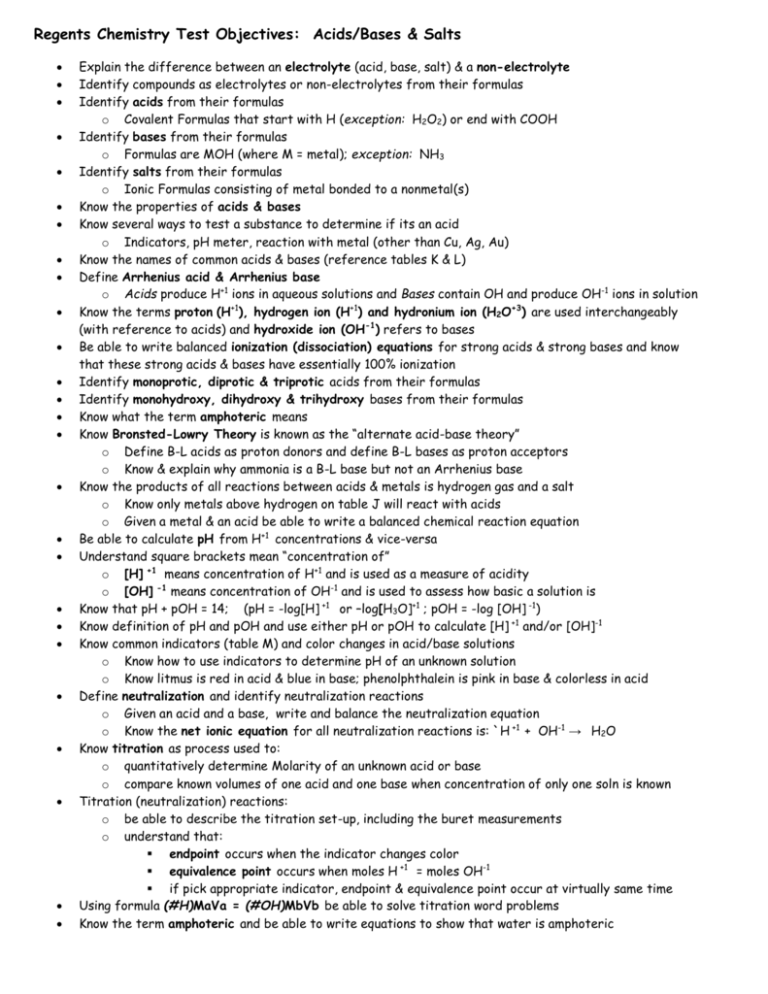
Regents Chemistry Test Objectives: Acids/Bases & Salts Explain the difference between an electrolyte (acid, base, salt) & a non-electrolyte Identify compounds as electrolytes or non-electrolytes from their formulas Identify acids from their formulas o Covalent Formulas that start with H (exception: H2O2) or end with COOH Identify bases from their formulas o Formulas are MOH (where M = metal); exception: NH3 Identify salts from their formulas o Ionic Formulas consisting of metal bonded to a nonmetal(s) Know the properties of acids & bases Know several ways to test a substance to determine if its an acid o Indicators, pH meter, reaction with metal (other than Cu, Ag, Au) Know the names of common acids & bases (reference tables K & L) Define Arrhenius acid & Arrhenius base o Acids produce H+1 ions in aqueous solutions and Bases contain OH and produce OH-1 ions in solution Know the terms proton (H+1), hydrogen ion (H+1) and hydronium ion (H2O+3) are used interchangeably (with reference to acids) and hydroxide ion (OH-1) refers to bases Be able to write balanced ionization (dissociation) equations for strong acids & strong bases and know that these strong acids & bases have essentially 100% ionization Identify monoprotic, diprotic & triprotic acids from their formulas Identify monohydroxy, dihydroxy & trihydroxy bases from their formulas Know what the term amphoteric means Know Bronsted-Lowry Theory is known as the “alternate acid-base theory” o Define B-L acids as proton donors and define B-L bases as proton acceptors o Know & explain why ammonia is a B-L base but not an Arrhenius base Know the products of all reactions between acids & metals is hydrogen gas and a salt o Know only metals above hydrogen on table J will react with acids o Given a metal & an acid be able to write a balanced chemical reaction equation Be able to calculate pH from H+1 concentrations & vice-versa Understand square brackets mean “concentration of” o [H] +1 means concentration of H+1 and is used as a measure of acidity o [OH] -1 means concentration of OH-1 and is used to assess how basic a solution is Know that pH + pOH = 14; (pH = -log[H] +1 or –log[H3O]+1 ; pOH = -log [OH] -1) Know definition of pH and pOH and use either pH or pOH to calculate [H] +1 and/or [OH]-1 Know common indicators (table M) and color changes in acid/base solutions o Know how to use indicators to determine pH of an unknown solution o Know litmus is red in acid & blue in base; phenolphthalein is pink in base & colorless in acid Define neutralization and identify neutralization reactions o Given an acid and a base, write and balance the neutralization equation o Know the net ionic equation for all neutralization reactions is: `H +1 + OH-1 → H2O Know titration as process used to: o quantitatively determine Molarity of an unknown acid or base o compare known volumes of one acid and one base when concentration of only one soln is known Titration (neutralization) reactions: o be able to describe the titration set-up, including the buret measurements o understand that: endpoint occurs when the indicator changes color equivalence point occurs when moles H +1 = moles OH-1 if pick appropriate indicator, endpoint & equivalence point occur at virtually same time Using formula (#H)MaVa = (#OH)MbVb be able to solve titration word problems Know the term amphoteric and be able to write equations to show that water is amphoteric

